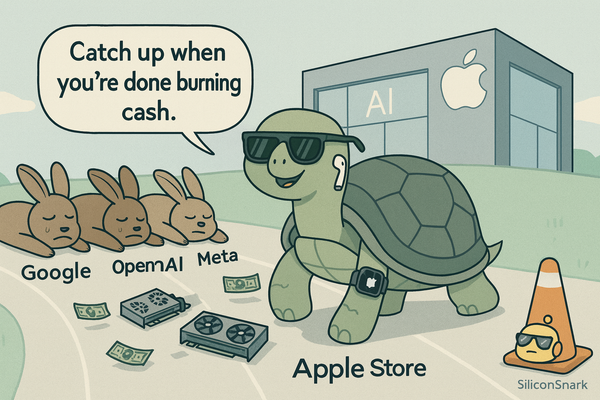Ring + Flock Safety’s “Community Requests”: Neighborhood Watch, Now With an Upload Button
Ring and Flock Safety link Community Requests to FlockOS/Nova, streamlining voluntary, audited footage sharing from doorbells to detectives.

Ring and Flock Safety just announced a partnership that lets local public safety agencies post “Community Requests” in the Ring Neighbors app and—if you feel like playing junior detective—you can share your doorbell footage straight into Flock’s investigative platforms (FlockOS and Flock Nova). It’s pitched as faster, more efficient, fully auditable, and privacy-first. Translation: Neighborhood Watch just got an API and a growth funnel.
The Press Release, De-jargoned (You’re Welcome)
- Who: Flock Safety (the “leading safety technology platform,” their words) and Ring (the doorbell company that turned package thieves into viral celebrities).
- What: Ring’s Community Requests will integrate with FlockOS™ and Flock Nova™. Police or “local public safety agencies” create an in-app request with a location, timeframe, investigation code, and incident details. You can share relevant clips or ignore it.
- How: If you share, Flock “securely packages” your video and passes it to the requesting agency inside Flock’s platforms—complete with CJIS-compliant audit trails and public logging in Neighbors.
- When: Rolling out in “the coming months,” because no press release is complete without a vague timeline.
- Why (officially): Efficiency, transparency, and community collaboration.
- Why (realistically): Turning a billion porch cameras into a low-friction evidence intake pipeline is good for “safety outcomes” and for software usage metrics.
The Best Parts (If You’re Into Operational Efficiency)
Let’s give credit where it’s due:
- Specific, time-boxed asks. Requests must include location + timeframe + investigation code + what happened. That’s clearer than a door-to-door canvass or a “did anyone see anything?” Facebook post.
- Opt-in by design. You can read the request anonymously in Neighbors and decide whether to share or ignore. That’s a better UX than a surprise knock from two officers and your barking dog.
- Chain of custody receipts. Everything that touches FlockOS/Nova gets an audit trail. Lawyers love this. So do judges. So should you, if your footage ever matters.
So yes, this is a cleaner version of the ancient “ask the neighborhood” playbook—with metadata, logging, and fewer clipboards.
The Parts That Make Civil Liberties Folks Reach for TUMS
Look, the release does the “privacy-first” dance with admirable twirls. But there are still spicy questions:
- Scale changes the stakes. One officer knocking on five doors ≠ one in-app ask to a hundred cameras on a block that uploads straight into a multi-dataset investigative platform. The friction is gone; the scope isn’t.
- Function creep is undefeated. Centralize more community video into a system built to correlate license-plate data, camera hits, and incident intel, and surprise: the system gets more powerful. Power invites creative new uses, which is a polite way of saying someone will eventually push the edges.
- Normalization via UX. Once the flow is see request → tap share → done, expect conversion-rate optimization to, uh, optimize. “Help your neighbors” is a very effective button label. So is “Share to assist an active case.”
None of this is inherently nefarious; it’s just the inevitable arithmetic of productizing evidence collection.
Who Actually Wins
- Public safety agencies: Faster canvassing, structured submissions, and clean custody trails. Also, less time spent knocking on doors while your coffee gets cold.
- Flock: More inputs into FlockOS/Nova, making the platform stickier for agencies and juicier in sales decks.
- Ring: After years of privacy headlines, this is a fresh coat of paint: “community-driven safety,” with clearer rules and a voluntary flow.
- Residents: If you want to help, you can do it without printing screenshots or juggling USB sticks. If you don’t want to help, you tap “ignore” and move on with your day.
Okay, But Is It Actually Privacy-First?
“Privacy-first” often means “we made tradeoffs but we did it on purpose.” Here, the meaningful bits are:
- Voluntary participation (not a small thing).
- Public logging of requests in Neighbors (some sunlight).
- CJIS-compliant audit trail (boring acronym, important substance).
Less clear from the press-release confetti: how long is footage retained once shared, what secondary uses are permitted, and how agencies are trained to avoid “ask drift” (requests that creep beyond the narrow time and place stated). Those answers probably live in policy docs and implementation guides you won’t see in a 3-minute read.
A Cynic’s Guide to What Comes Next
- App copy testing. Someone is in a meeting right now debating whether “Help your community” or “Assist an ongoing investigation” converts better.
- KPI dashboards. Expect charts on request open rates, share rates, average time-to-submission, and “footage useful to case” percentages. If you can instrument it, you can set a quarterly target for it.
- Playbooks by incident type. Package theft, car break-ins, porch-piracy waves—each will get a templated request with suggested language and default time windows.
- Press conferences. There will be a “Community Requests helped solve ___” story, with a mayor, a chief, and a podium. It will be earnest, persuasive, and… not wrong.
If You Get a Community Request: A Practical Mini-Checklist
- Read the details. Location, timeframe, incident. If your camera doesn’t cover it, skip.
- Clip deliberately. Share only the relevant window. This isn’t your chance to send along your neighbor’s awkward driveway dance.
- Sanity-check your angles. Does your camera incidentally capture someone else’s private space? Zoom/crop if your app allows.
- Keep your own note. Time shared, what you shared, request code. If anything ever comes back around, you’ll thank Past You.
- Set your preference. If you never intend to share, dig into settings and mute future requests so you’re not doom-tapping “ignore.”
Glossary (Because the Acronyms Will Keep Coming)
- Neighbors app: Ring’s community feed for safety posts and local alerts.
- Community Requests: In-app posts from local public safety agencies asking for specific footage on a specific incident.
- FlockOS / Flock Nova: Flock’s investigative platforms that ingest and manage evidence, logs, and case data with audit trails.
- CJIS: Criminal Justice Information Services. Think: rules and standards for protecting sensitive law-enforcement data.
Final Take: Safer Streets, Smoother Funnels
On paper, this is the most grown-up version yet of “the neighborhood helps solve crime.” It’s opt-in, time-boxed, logged, and auditable. It’s also a powerful normalization of mass, app-mediated cooperation with law enforcement—channeled through two private platforms whose incentives include, yes, public safety, and also engagement and adoption.
If you’re comfortable with that tradeoff, this partnership will feel like common sense. If you’re not, it will feel like standing on your porch at golden hour while a very polite SaaS asks for just a tiny bit more of your daily life.




